Abstract
Kahn, Phyllis L. (Princeton University, Princeton, N.J.), and Donald R. Helinski. Relationship between colicinogenic factors E1 and V and an F factor in Escherichia coli. J. Bacteriol. 88:1573–1579. 1964.—Colicinogenic factors are the genetic determinants for colicin production in enteric bacteria. An examination of the relationship of two colicinogenic factors, colE1 and colV, to the F factor of fertility in Escherichia coli revealed that the colE1 factor does not have the properties of a fertility factor, whereas the colV factor appears to possess a genetic determinant of fertility (Fv). Cells containing colE1 alone do not recombine with F− strains, whereas V+Fv+ strains can recombine, but at a lower frequency for certain markers than cells containing the F factor from E. coli. Strains possessing the colV factor can transfer the V+ and Fv+ properties to an F− recipient, whereas strains harboring colE1 alone are not able to transfer this factor. When a V+Fv+E1+ strain is used as a donor, recipients show Fv+ sexuality characteristics only if they also acquire the ability to produce colicin V. The colV factor is transferred at lower efficiency to F+ than to F− strains, whereas the transfer of colE1 is equally efficient to both. In addition, the V+Fv+F+ colonies isolated segregate V+Fv+F− and V−Fv−F+ cells at high frequency, indicating an incompatibility between the colV and F factors. Finally, under the conditions employed, acridine orange does not remove the colE1 factor, but will remove the colV factor from colicinogenic cells. In every case tested, the V+ and Fv+ characteristics are removed simultaneously by the acridine orange treatment.
Full text
PDF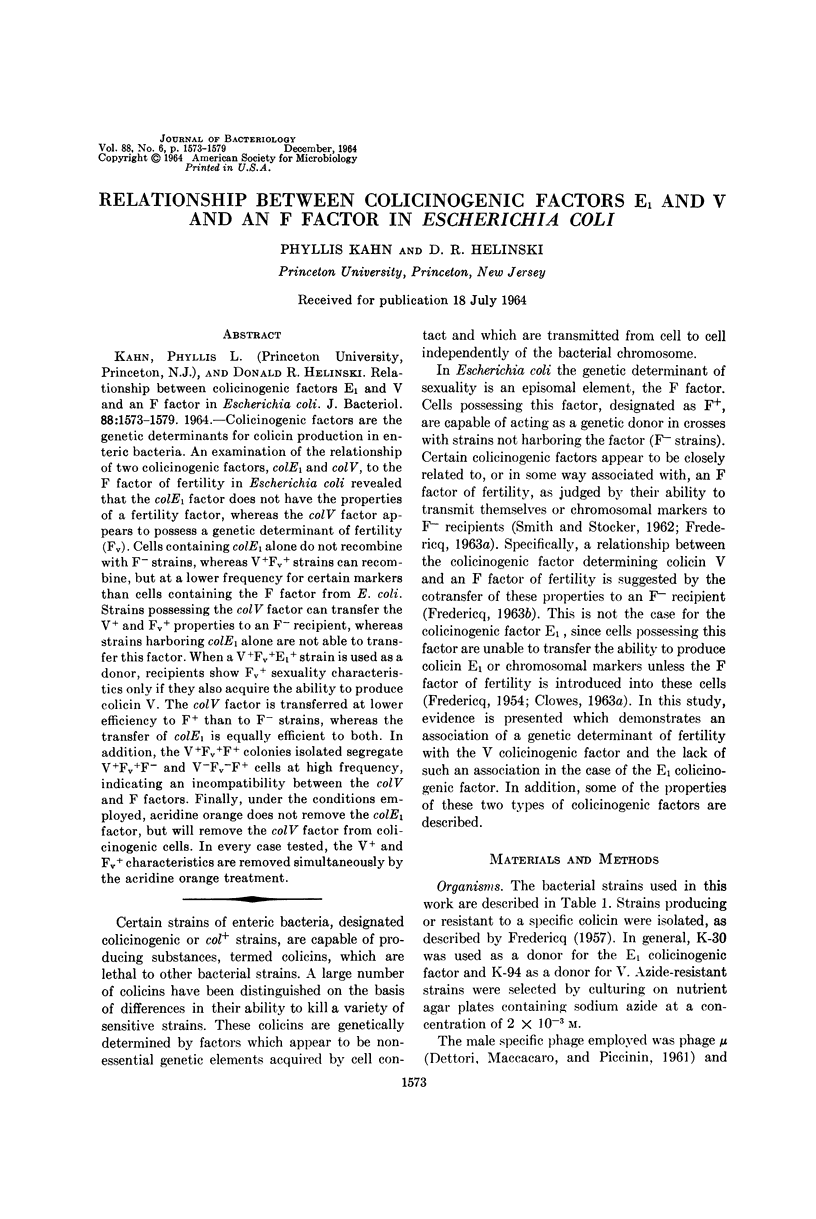
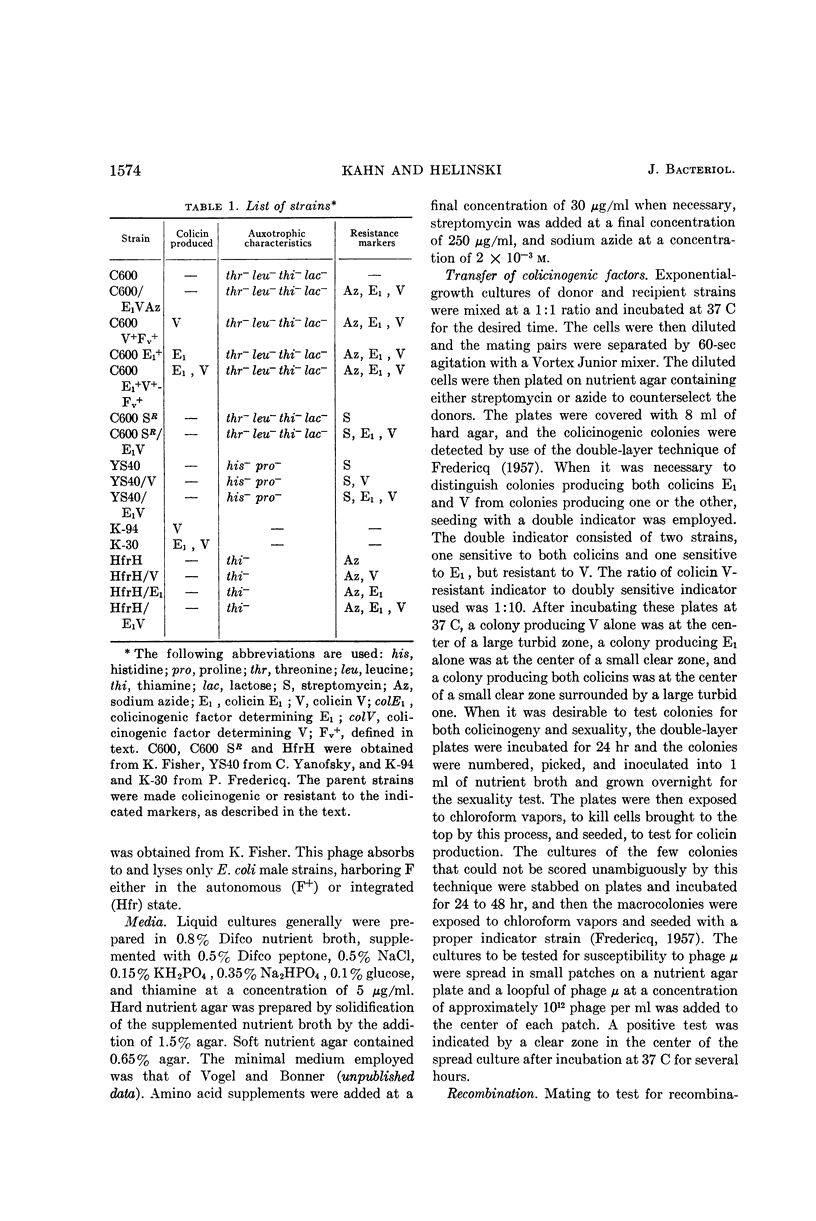
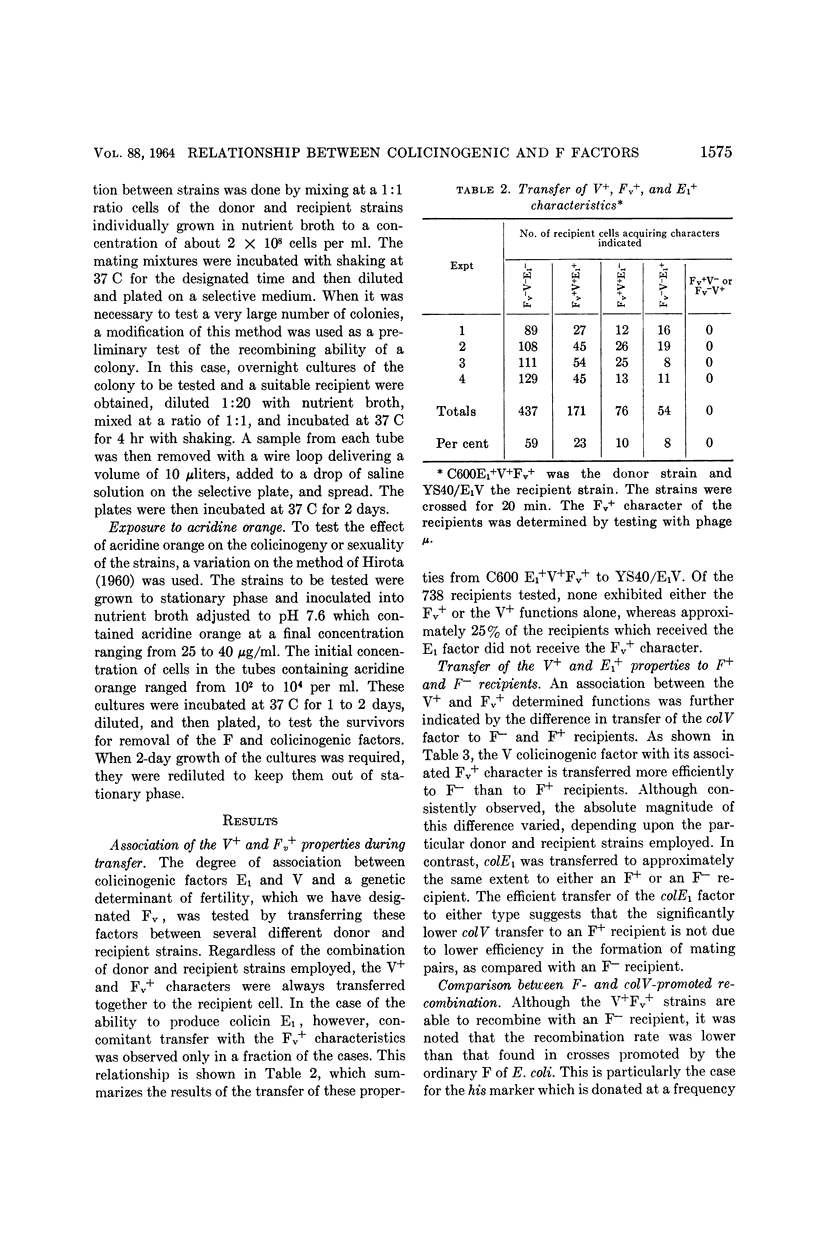
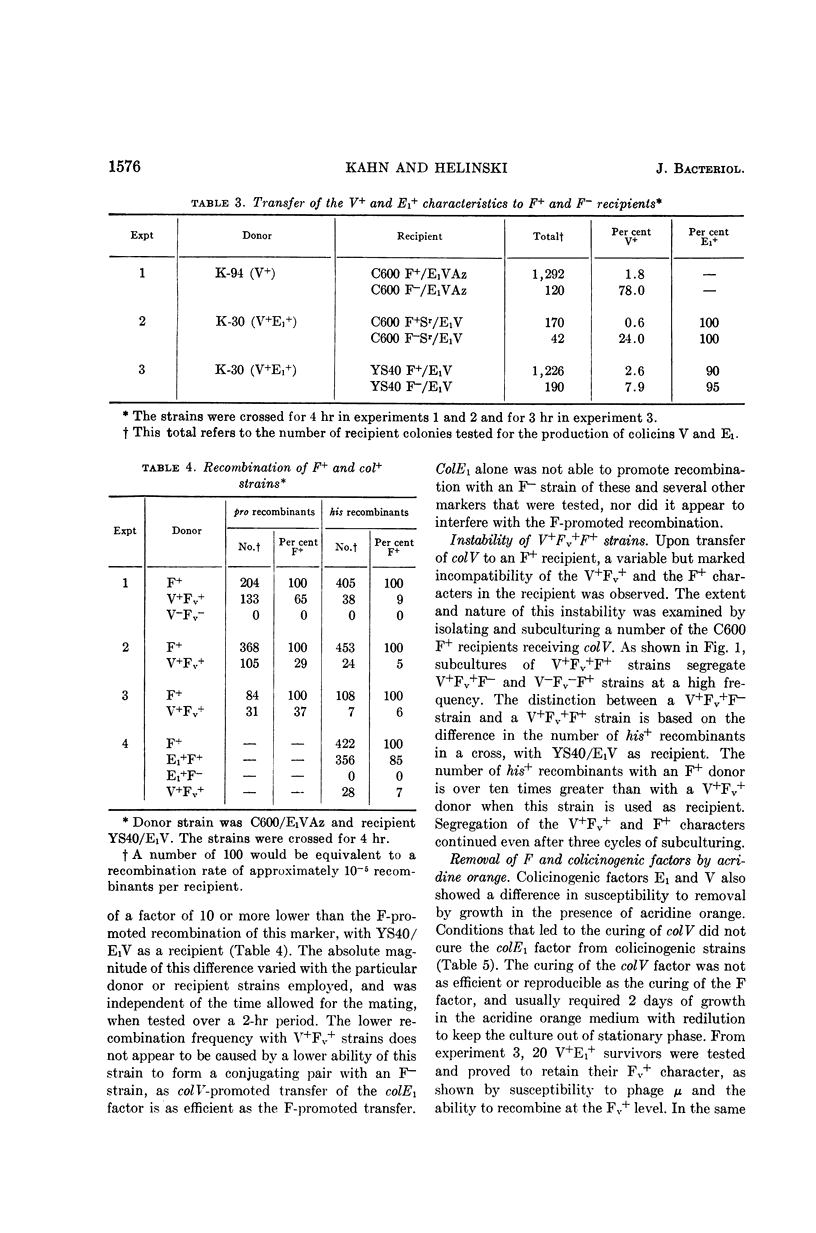
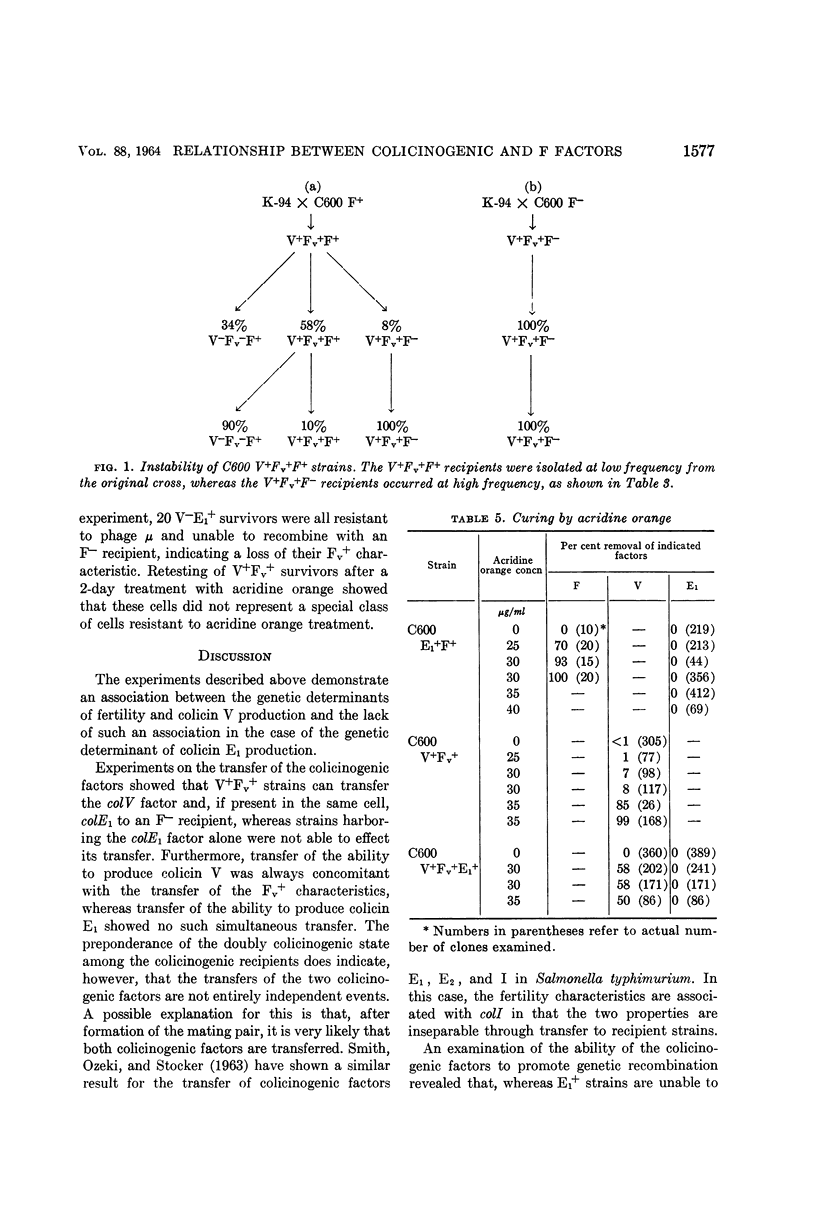
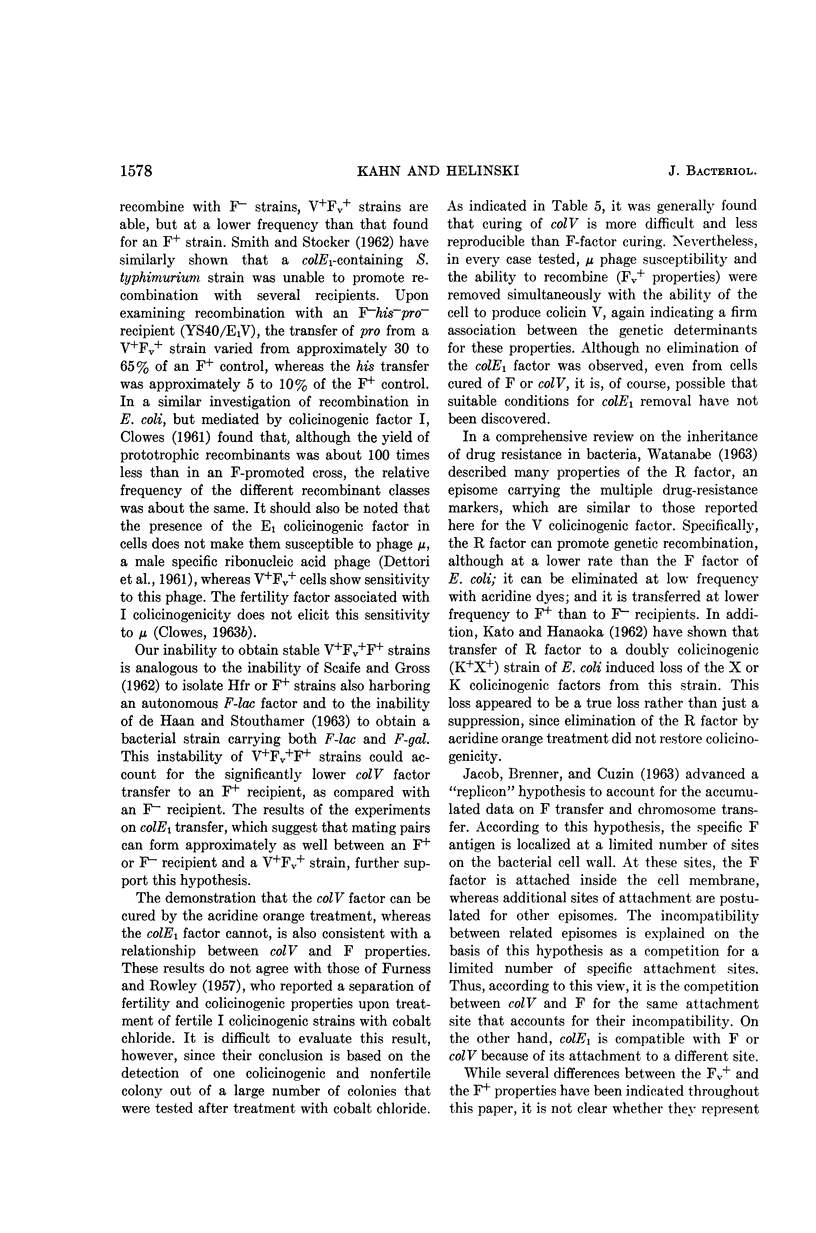
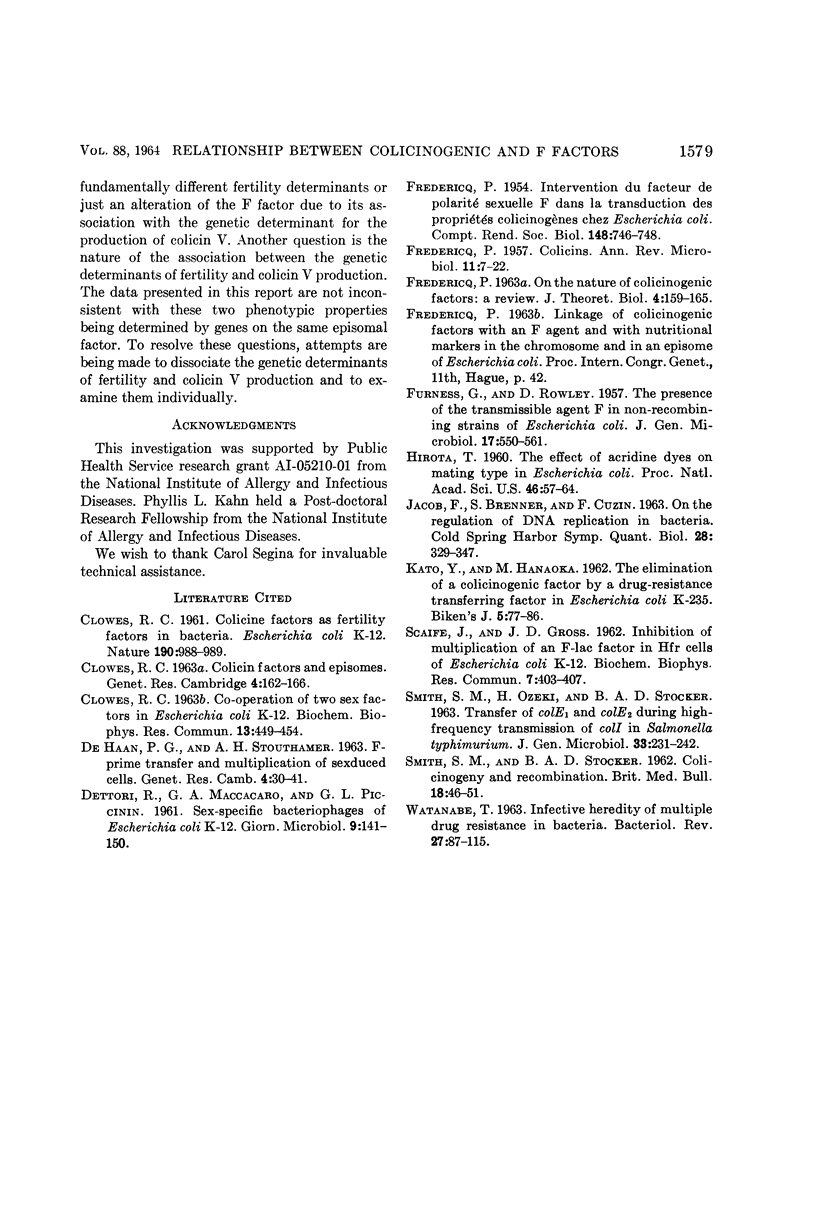
Selected References
These references are in PubMed. This may not be the complete list of references from this article.
- CLOWES R. C. Colicine factors as fertility factors in bacteria: Escherichia coli K-12. Nature. 1961 Jun 10;190:988–989. doi: 10.1038/190988a0. [DOI] [PubMed] [Google Scholar]
- FREDERICQ P. Colicins. Annu Rev Microbiol. 1957;11:7–22. doi: 10.1146/annurev.mi.11.100157.000255. [DOI] [PubMed] [Google Scholar]
- FREDERICQ P. Intervention du facteur de polarité sexuelle F dans la transduction des propriétés colicinogènes chez Escherichia coli. C R Seances Soc Biol Fil. 1954 Apr;148(7-8):746–748. [PubMed] [Google Scholar]
- FURNESS G., ROWLEY D. The presence of the transmissible agent F in non-recombining strains of Escherichia coli. J Gen Microbiol. 1957 Dec;17(3):550–561. doi: 10.1099/00221287-17-3-550. [DOI] [PubMed] [Google Scholar]
- Fredericq P. On the nature of colicinogenic factors: a review. J Theor Biol. 1963 Mar;4(2):159–165. doi: 10.1016/0022-5193(63)90024-9. [DOI] [PubMed] [Google Scholar]
- Hirota Y. THE EFFECT OF ACRIDINE DYES ON MATING TYPE FACTORS IN ESCHERICHIA COLI. Proc Natl Acad Sci U S A. 1960 Jan;46(1):57–64. doi: 10.1073/pnas.46.1.57. [DOI] [PMC free article] [PubMed] [Google Scholar]
- KATO Y., HANAOKA M., AMANO T. The elimination of a colicinogenic factor by a drug-resistance transferring factor in Escherichia coli K 235. Biken J. 1962 Jun;5:77–86. [PubMed] [Google Scholar]
- SCAIFE J., GROSS J. D. Inhibition of multiplication of an Flac factor in Hfr cells of Escherichia coli K-12. Biochem Biophys Res Commun. 1962 May 11;7:403–407. doi: 10.1016/0006-291x(62)90324-8. [DOI] [PubMed] [Google Scholar]
- SMITH S. M., OZEKI H., STOCKER B. A. TRANSFER OF COLE1 AND COLE2 DURING HIGH-FREQUENCY TRANSMISSION OF COLI IN SALMONELLA TYPHIMURIUM. J Gen Microbiol. 1963 Nov;33:231–242. doi: 10.1099/00221287-33-2-231. [DOI] [PubMed] [Google Scholar]
- SMITH S. M., STOCKER B. A. Colicinogeny and recombination. Br Med Bull. 1962 Jan;18:46–51. doi: 10.1093/oxfordjournals.bmb.a069934. [DOI] [PubMed] [Google Scholar]
- WATANABE T. Infective heredity of multiple drug resistance in bacteria. Bacteriol Rev. 1963 Mar;27:87–115. doi: 10.1128/br.27.1.87-115.1963. [DOI] [PMC free article] [PubMed] [Google Scholar]


